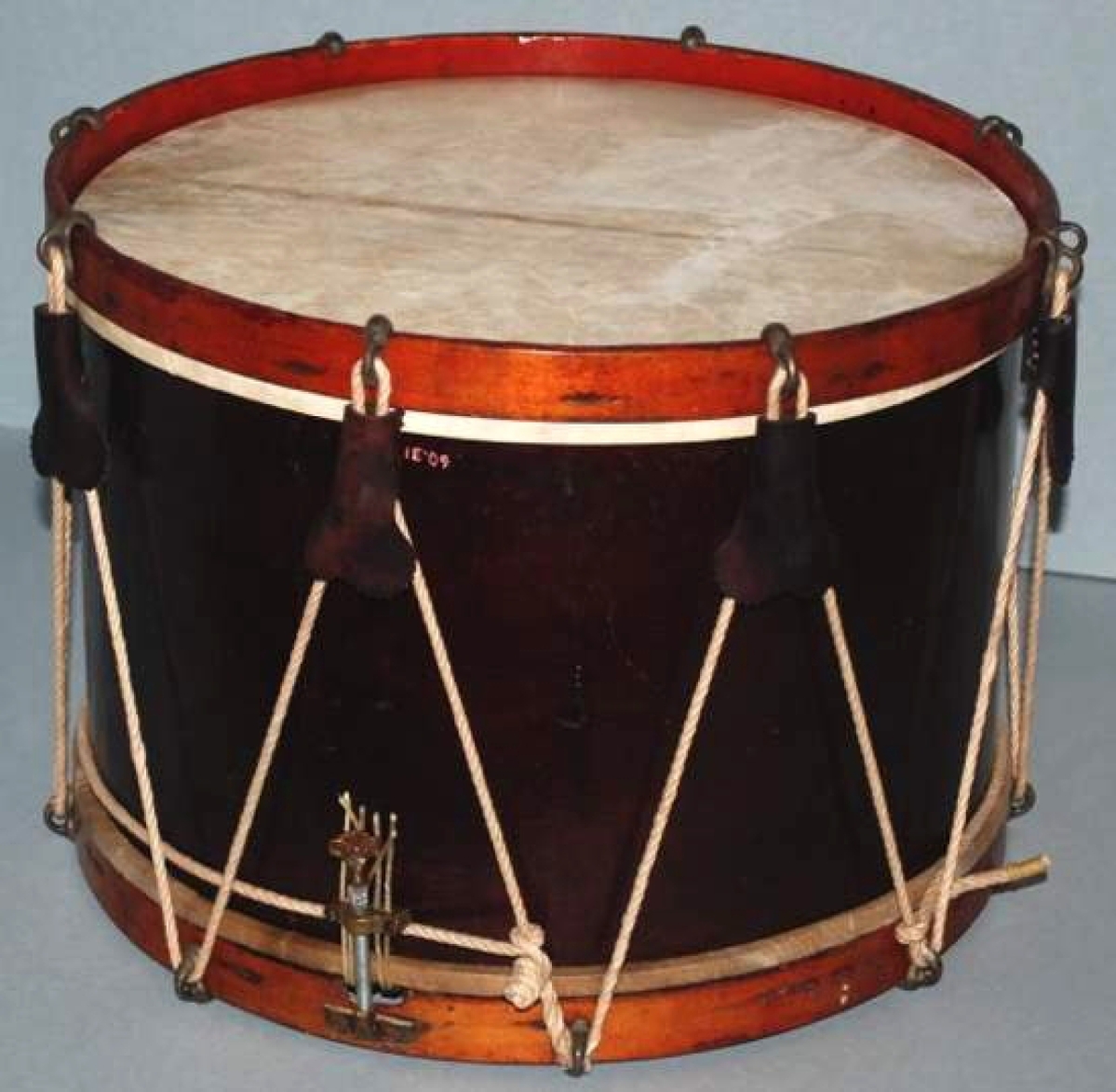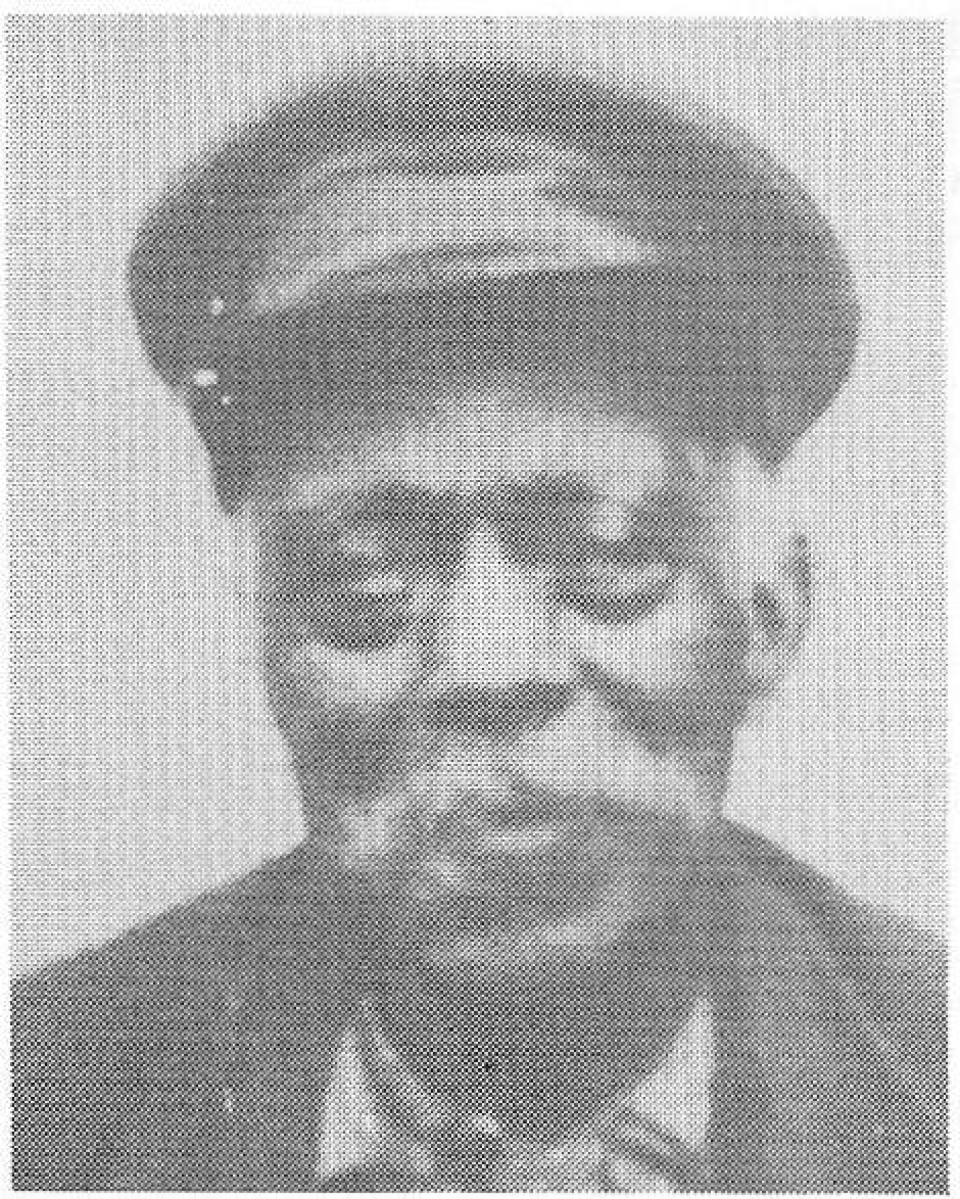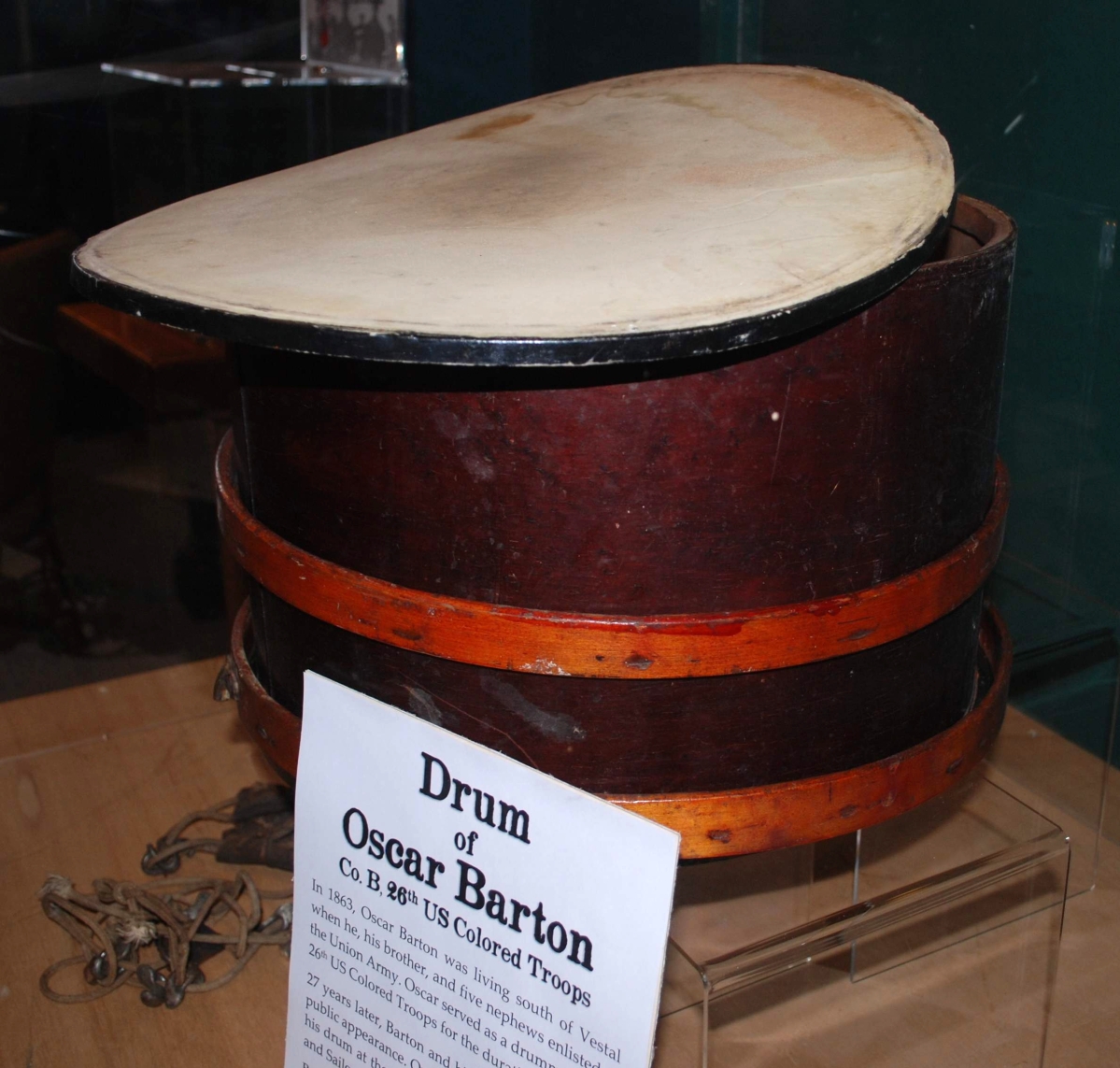
The drum was restored with new ropes, snares and goatskin drumheads, all accurate to its time period.
OWEGO, N.Y. – Upstate New York has had a long history with the upholding of civil liberties – from the protection of freed slaves after the Civil War to the promotion of women’s rights through the passage of the 19th Amendment. Civil rights leaders like Frederick Douglass, Susan B. Anthony and Harriet Tubman all called upstate New York their home. But in the southern tier of the state, many residents of various creeds and colors contributed to their society in ways that left an indelible mark.

A photograph of Oscar Barton, a Vestal, N.Y., man who enlisted during the Civil War as a drummer for the Union Army.
One such man was Oscar Barton. Growing up in Vestal, N.Y., and settling in Owego, he enlisted during the Civil War as a drummer. His long life and legacy demonstrate his commitment to his community and his drum survives as a reminder of the diversity and dedication of generations of Tioga County residents.
After the Emancipation Proclamation was issued, the federal government began actively recruiting African American soldiers under the name United States Colored Troops (USCT). Over the course of the war, more than 170,000 African American soldiers fought for the North. By the end of combat in 1865, about one in every ten soldiers in the Union Army was African American.
A descendant of freedmen from Rhode Island, Barton was living south of Vestal when the Civil War began. In 1863, Barton enlisted in the Union army at 30 years old along with his brother and five nephews. In fact, this was not his family’s first brush with military activity. Barton’s maternal grandfather, Thomas Reynolds of Bristol, R.I., had been a soldier in the American Revolution. When Barton enlisted some decades later, he became a drummer in Company B of the 26th USCT regiment for the Union Army. He served for two years, carrying his drum across the South and participating in military engagements such as James Island, Honey Hill and Tillifinny Station.
As a military drummer, Barton filled an important leadership role and endured many of the same hardships as other infantrymen. During the Civil War, drummers played an integral role in military operations by counting march time on the parade grounds and offering communications on the battlefield as dictated by their commanders. If a drummer were to skip a step or miss a beat, it could have serious consequences for the dispatch of troops or the organization of infantry. They were also typically recruited in times of need as stretcher-bearers or aides to surgeons in medical outposts.
Barton served until the end of the war in 1865, thereupon returning to upstate New York and settling in Owego.

Barton’s drum was significantly damaged in a 2011 flood that affected the downtown region of Owego where the Tioga County Museum is located.
Unfortunately, he struggled for many years with chronic illnesses related to his military service, ultimately impairing his ability to work. Eventually, a chronic paralytic condition confined him to a wheelchair. However, he appeared nobly for one final public engagement with his drum on July 4, 1892. At the age of 60, he went to pay respects and play his drum at the dedication of the then-new Soldiers and Sailors Monument in Owego’s courthouse square. According to accounts from the crowd gathered there that day, Barton stroked his drum as if he had never lost a step. Barton lived with his daughter and son-in-law until he died in 1933 at the age of 101, and was buried at Evergreen Cemetery in Owego.
Barton’s drum was donated to the Tioga County Historical Society in the 1990s. It had been displayed a number of times in Civil War-themed and other local exhibits, but like many of the war-related items at the Tioga History Museum, it was in dire need of restoration. In 2011, a significant flood affected the downtown region of Owego where the Tioga County Museum is located, and more than 4 feet of water flooded the collections area. Oscar Barton’s drum survived, but in even worse shape than before. Earlier this year, the Early Owego Antique Center funded the complete restoration of the drum to preserve Barton’s legacy as well as the contributions of many African Americans from Tioga County who served in the Civil War.
The drum was sent to the Cooperman Fife and Drum Company in Bellows Falls, Vt., where it was outfitted with new ropes, snares and goatskin drumheads, all accurate to the drum’s time period. Today, the piece is on display at the Tioga History Museum along with a photograph of Oscar Barton, both looking bright as ever.
Now that the drum is restored to its original condition, visitors to the museum can appreciate the piece and realize its vital use in the Civil War. The drum will be on display as part of an African American history exhibit from March 8 to May 25 at the museum.
The Tioga History Museum is at 110 Front Street. For information, www.earlyowego.com or www.tiogahistory.org.




